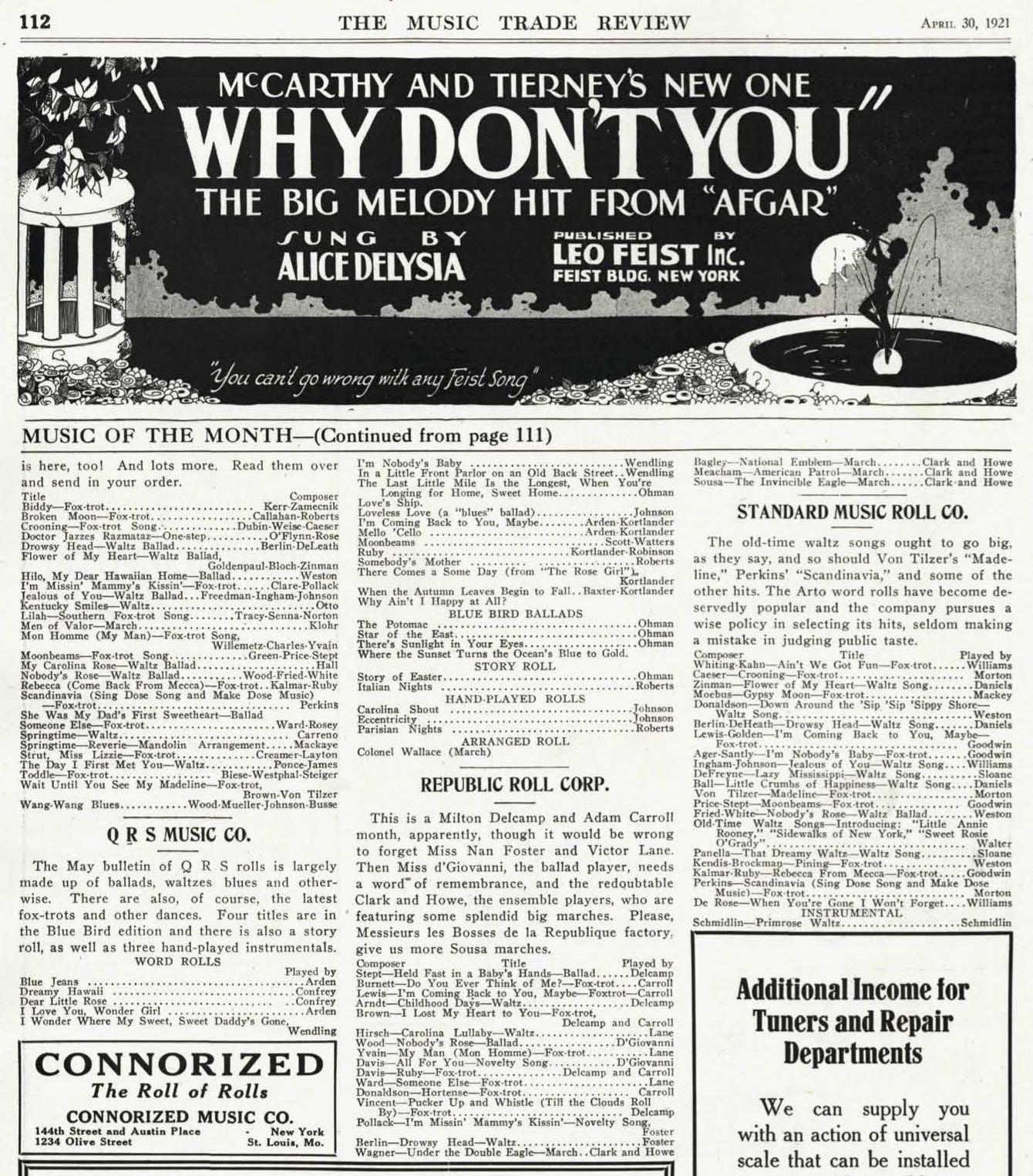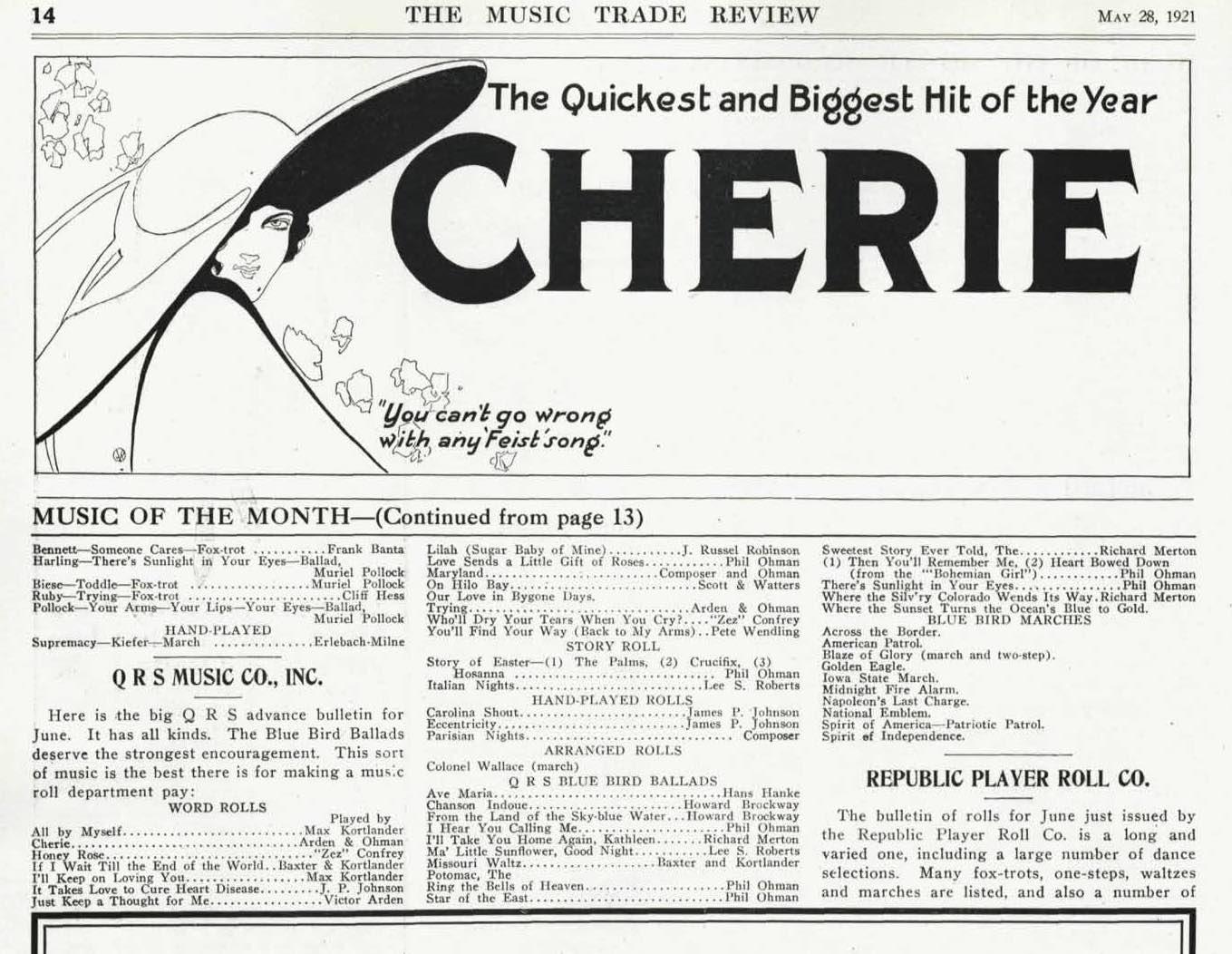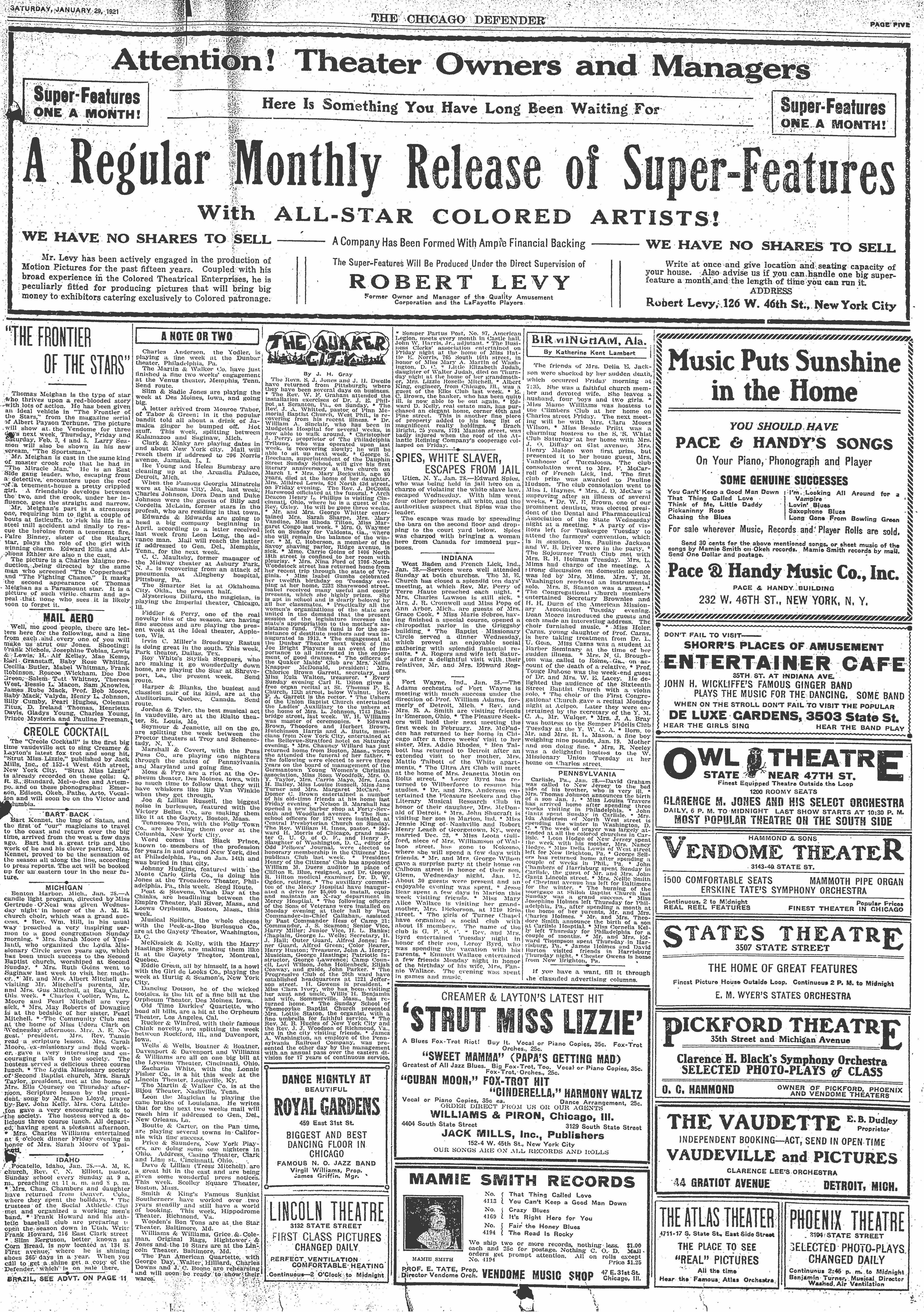The wonderful QRS ledger rescued by the late Randolph Herr begins with Word Roll number 2400, from 1923, and hence does not cover the period when James P. Johnson (JPJ for short) made "Carolina Shout", in 1921. But this does give us a kind of calibration about how long it typically was between the production of the roll master and its release in the early 1920s. So let's look at the start of the ledger. First page:
Now, the second roll on there is number 2401, "Whicker Bill Blues" composed and played by J. Lawrence Cook. According to the log, layout of the master was completed on Tuesday, August 14, 1923, the dynamics markings (presumably what is meant by "Dynaline") added the same day, and master copies sent off to the Chicago, San Francisco and Toronto plants also on that day. This roll was advertised in the trade publications at the end of September, a month later, as being among the October 1923 releases, as can be seen in this page from PRESTO:
Indeed, the roll label itself does say 1023 on it (October 1923):
We can therefore extrapolate that this kind of time lag was typical, being the time it took the master roll to get to the plants (they didn't have overnight shipping in 1923) and production of the rolls and distribution to retailers. Hence, when we see that Carolina Shout was advertised similarly (along with Eccentricity Waltz) in late April 1921 for release in May 1921, as shown below, we can imagine that the layout of the roll might have been completed around March 1921, with Johnson having come into the QRS plant sometime shortly before that. Note that the May 1921 releases also included JPJ playing "Loveless Love" in the Word Roll series, number 1340. One has to guess that Johnson came in and recorded "Don't Tell Your Monkey Man" (QRS 1338), his own "It Takes Love to Cure the Heart's Disease" (QRS 1339), "Loveless Love" (QRS 1340), and the instrumentals "Carolina Shout" (QRS 100999) and "Eccentricity" (QRS 101000) all in the same session.
Also, it's interesting to look at the next month's corresponding marketing announcement, at the end of May for the June bulletin. You can see that they listed "Carolina Shout" and "Eccentricity" again, and they released "It Takes Love to Cure the Heart's Disease" (though they list it as the decidedly medically misleading "It Takes Love to Cure Heart Disease"!). What's interesting is that by this month, the other releases have much higher numbers than 1338-1340, like Wendling's "You'll Find Your Way (Back to My Arms)", which is number 1468. According to Billings, they also released the next batch of JPJ rolls, like "Roumania" (1479) and "Dr. Jazzes Raz-Ma-Taz" (1473) in June 1921, though they are not listed in the 'highlights' shown in the MTR piece. So it seems that they were spreading out or delaying the issuing of the JPJ rolls for whatever reason at this time.
In this very special case, we have another important document which allows us to place a limit on the other end (that is, we know that JPJ had to have recorded the roll before April 1921, but we can now add that he had to have recorded the roll after a certain date - see below). It turns out that preserved in JPJ's papers at the Institute for Jazz Studies at Rutgers, Newark is Johnson's copy of his exclusive two-year contract with QRS, dated January 10, 1921 (a Monday). It seems likely that it was on the occasion of JPJ signing this contract that QRS took the famous photo for them to use in publicity, shown here. The document also specifies JPJ's pay under the contract, including royalties, which would seem unusual for African American artists at that time. Surely QRS hiring Johnson must have been their response to their competitors at Aeolian having hired Eubie Blake, presumably in late 1920, as the first of Blake's Mel-O-Dee rolls was released in January 1921.
At the risk of beating this completely to death, scanning through the Billings Rollography does show something interesting about the JPJ word rolls in this first batch, 1338, 1339 and 1340. It seems a reasonable assumption that the numbering was assigned when the songs were assigned to the artists to arrange. That is generally supported by the ledger, a couple of years later. But if we compare the numbers on either side of 1338-40, we see that rolls 1331-1335 were released in February 1921, 1336 in March 1921, 1341 in April 1921, 1342-49 all back in March 1921, 1355 in April, 1360-1369 in March (!), 1378, and 1380-1402 all in April 1921! In short, all of the surrounding roll numbers were probably laid out as early as January 1921 or even earlier, so it's quite possible that Johnson recorded 1338-40 (and presumably 100999 and 101000) right around the time he signed the contract, around January 10, 1921. A final bit of evidence is the copyright dates of "Loveless Love". W.C. Handy sent in the application for the copyright on Jan. 1, 1921, though the copyright of the published work was not completed until the required 2 copies of the printed edition were received on March 11, 1921. Johnson surely could have been given a lead sheet by Handy around January 1921. (The other two songs don't help much, because "Don't Tell Your Monkey Man" was copyrighted in 1919, and JPJ's own "It Takes Love to Cure the Heart's Disease" was not copyrighted at the time (though it was actually published, as has quite recently been discovered - the topic of another post sometime.) Also, note that 1342 is Berlin and Akst's song "Home Again Blues". That tune was copyrighted in November 1920, and QRS's competitors in 1921, Imperial, issued their arrangement, done by Clarence Jones, in February 1921, and Mel-O-Dee (Aeolian) issued their version arranged by Eubie Blake also in February. So QRS was under pressure to get their version out, by J. Russel Robinson, which they did in March 1921.
 cropped a bit.jpg) |
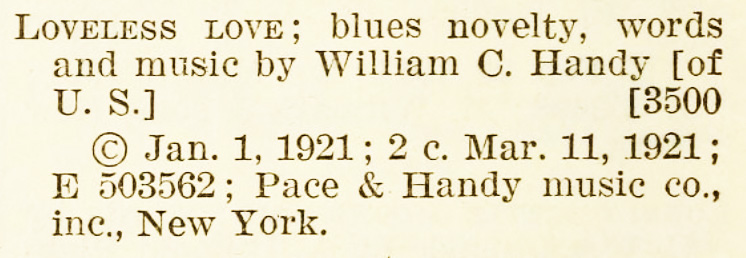 |
Bottom line: it's quite possible that James P. Johnson actually recorded his first five rolls for QRS, including the landmark "Carolina Shout" roll, as early as January 10, 1921, so we may be right at the 100th anniversary of that recording session this month (January 2021).
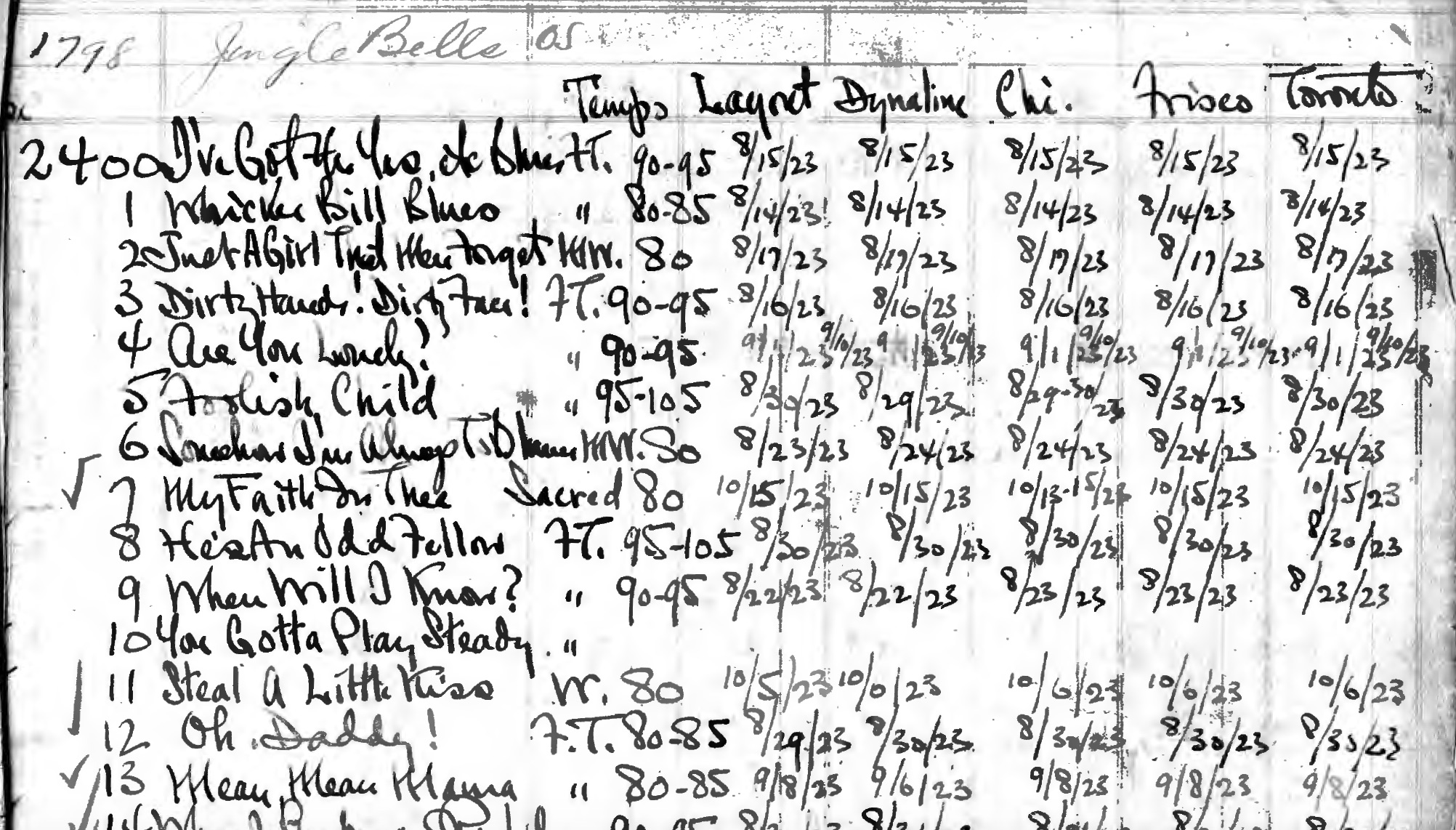
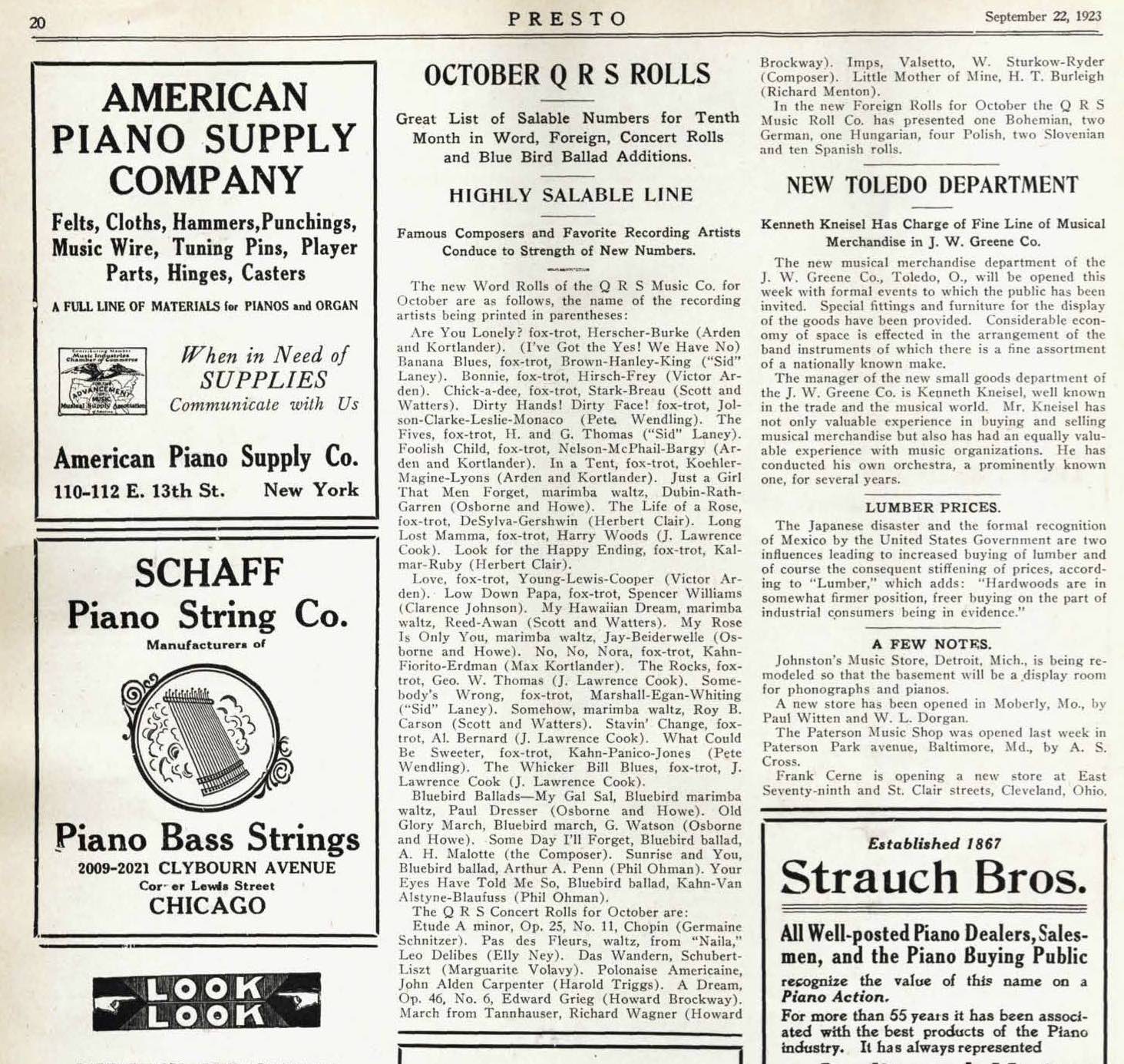
.jpg)
